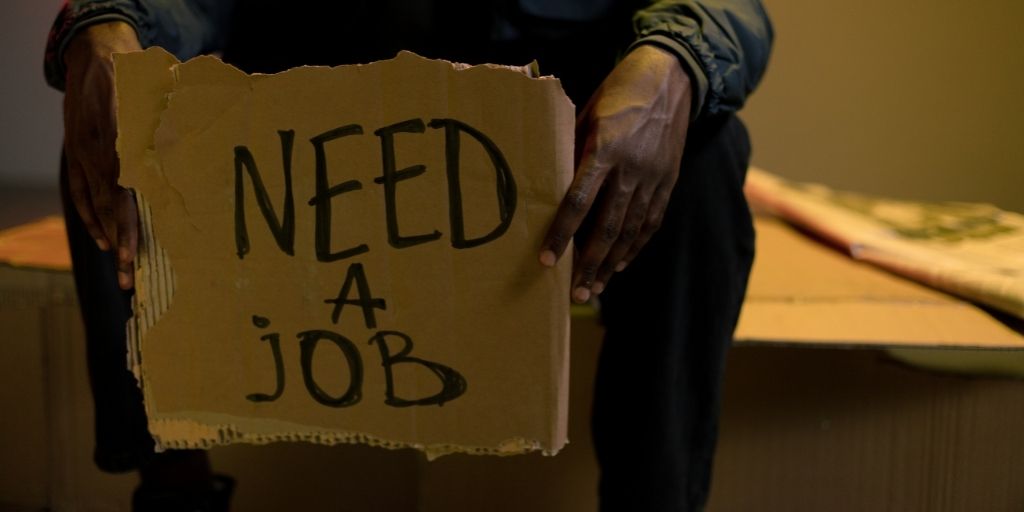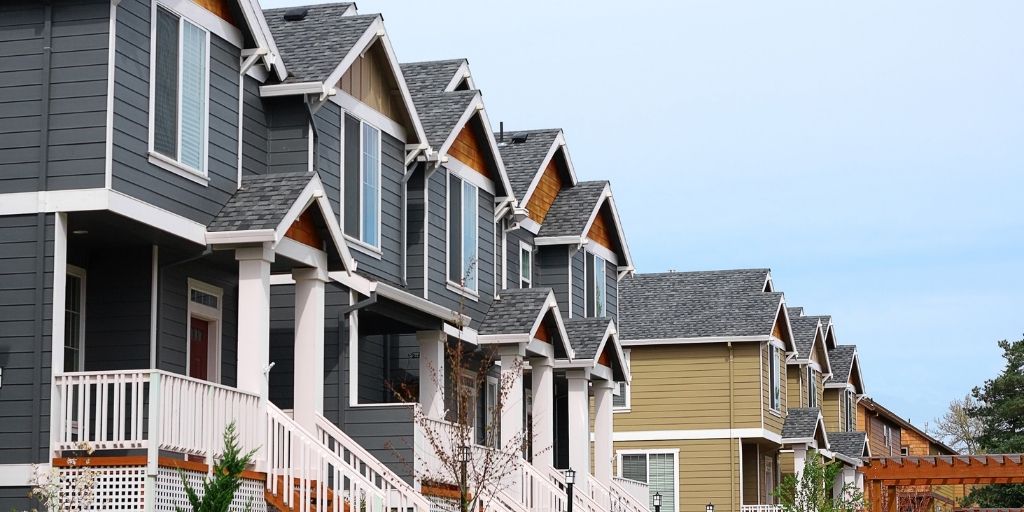What Is an Economic Depression?
What Happens in an Economic Depression?
An economic depression is a negative macroeconomic condition. A country experiencing a depression will usually experience[1]:
- A drop in the gross domestic product of over 10%.
- An unemployment rate of around 20% or more.
- Negative GDP growth that persists for over a year.
A depression can also be characterized by a stock market collapse, widespread business and personal bankruptcies, and general poverty and homelessness.

A breadline near Brooklyn Bridge, New York, during the Great Depression. (Credit: The Everett Collection)
The adverse economic conditions during an economic depression are also generally present during a recession. The difference between these two is mainly in their duration—a depression sticks around for years (which makes it more damaging to economic infrastructure), whereas a recession may only last for months. This is one reason a depression is also called an extreme recession[2].
The U.S. has recorded 34 recessions since 1834, but only one depression in its history—the Great Depression, which lasted from 1929 to 1939[3]. The Great Depression is considered the worst economic downturn in the industrialized world[4].
What Causes a Depression?
Since the United States has experienced only one instance of a depression so far, pinpointing the cause of an economic depression may be best typified by the factors that precipitated the Great Depression. These causes include[5]:
- Speculation-based economic boom. The Roaring 20s brewed the perfect storm that was the Great Depression. Huge speculative private and institutional investments in the stock market, as well as sharply increased consumer debt, fueled this boom. Financial regulations were also weak then, further setting the stage for the severe economic downturn.
- Stock market crash. The hyper-inflated stock market finally collapsed on Black Friday, October 24, 1929, opening 11% lower than its previous close. Investors continued unloading millions of shares on Black Tuesday, October 29, with no buyers of sharply devalued issues. The grim situation sparked other serious economic problems.
- Overproduction and oversupply. The mass production that powered the 1920s boom in consumer demand led to a market oversupply. Manufacturers started selling their goods, including farm produce, at a loss even before the stock market crash.
- Low demand and high joblessness. Losing money, companies cut their production and their workforce. Thus, consumer spending suffered, causing more companies to cut back or shut down, resulting in more layoffs.
- Misguided government policies. The Federal Reserve adopted a low-interest rate regime allowing the heady expansion of the early to mid-1920s. After the crash, the inexperienced Fed doubled the rates, further contributing to the economic bust. The U.S. also used tariffs to prevent cheaper, competing imports from overrunning domestic products, sparking foreign retaliation that also contributed to the Great Depression.
Signs of a Looming Depression
The lessons from the U.S. Great Depression revealed some indicators that an economic catastrophe of that magnitude is imminent. These signs include the following[6]:
- Worsening joblessness.
- A drop in consumer purchasing power.
- Declining consumer confidence.
- Accelerating inflation.
- Increased credit card debt defaults.
- Declining real estate sales and prices.
The Aftermath of the Great Depression
An economic depression, despite its devastating effects, can leave some positive impacts. The U.S. Great Depression, for example, inspired Roosevelt’s “New Deal.” Among other things, the New Deal program brought immediate solutions like federal government relief funding.
In the longer term, Roosevelt’s program also led to the creation of unemployment insurance, minimum wages, maximum work hours, collective bargaining, a national retirement system, and Social Security. Public housing and mortgage protection that support the U.S. real estate market likewise emerged from the New Deal[7].
The U.S. Federal Reserve, in addition, developed into a modern central bank following the reforms to counter the Great Depression. The radical changes in the Fed’s framework have led to the popular belief that a depression of the 1930s magnitude would not happen again[8].
How Can Investors Survive a Depression?
Some asset classes are more resistant to the effects of a recession (and by extension, a depression) than other investment vehicles. Three examples are below[9]:
- Real estate. Debt-free real estate properties, especially those in coveted locations, can hold or appreciate in value during an economic slowdown.
- Precious metals. Gold and silver are examples of precious metals with intrinsic value. Because of this, their value often appreciates during a recession or a depression. Other hard assets to consider are collectibles like artworks and coins.
- Cash. Cash is king in an economic collapse. However, it is best to store cash in a private vault instead of a safety deposit box in a bank, which is usually not insured in case of loss or theft.
- Domestic and foreign bonds. Government bonds, like Treasury bills with fixed interest rates, are financial instruments more stable than stocks during a depression.
Takeaways
- A depression is an economic downturn that extends for several years and with wide-ranging effects on a country’s economy. It is marked by the same characteristics as a recession, only that it persists for far longer. This makes depression more damaging than a recession, and with more far-reaching effects.
- The United States has experienced 34 recessions but only one depression in its history, the Great Depression of the 1930s.
- The lessons learned from the Great Depression helped strengthen the American economic system. It added failsafes to the economy, including federal relief funding, unemployment insurance, Social Security, collective bargaining, public housing, and mortgage protection. It also modernized the Federal Reserve.
- An economic depression is a mostly hostile environment for investing, but real estate is among the best asset classes to weather an economic downturn like a recession or a depression.
Sources
- Duggan, W. (2022.) Economic Depression Definition. US News. Retrieved from https://money.usnews.com/investing/term/economic-depression
- Liberto, D. (2021.) What Is a Depression? Investopedia. Retrieved from https://www.investopedia.com/terms/d/depression.asp
- Amadeo, K. (2022.) Recession vs. Depression: How to Tell the Difference. The Balance. Retrieved from https://www.thebalance.com/recession-vs-depression-definition-causes-and-stats-3306048
- History.com. (n.d.) Great Depression History. Retrieved from https://www.history.com/topics/great-depression/great-depression-history
- Field, A. (2020.) The Main Causes of the Great Depression, and How the Road to Recovery Transformed the U.S. Economy. Business Insider. Retrieved from https://www.businessinsider.com/personal-finance/what-caused-the-great-depression
- Corporate Finance Institute. (2022.) Economic Depression. Retrieved from https://corporatefinanceinstitute.com/resources/knowledge/economics/economic-depression/
- Cohen, E. (2020.) The Lessons of the Great Depression. The Atlantic. Retrieved from https://www.theatlantic.com/ideas/archive/2020/05/how-rebuild-nation/611704/
- Federal Reserve History. (2013.) The Great Depression. Retrieved from https://www.federalreservehistory.org/essays/great-depression
- Buek, E. (n.d.) How to Protect Wealth in a Depression. Safe Haven Vaults. Retrieved from https://safehavenvaults.com/how-to-protect-wealth-in-a-depression/







